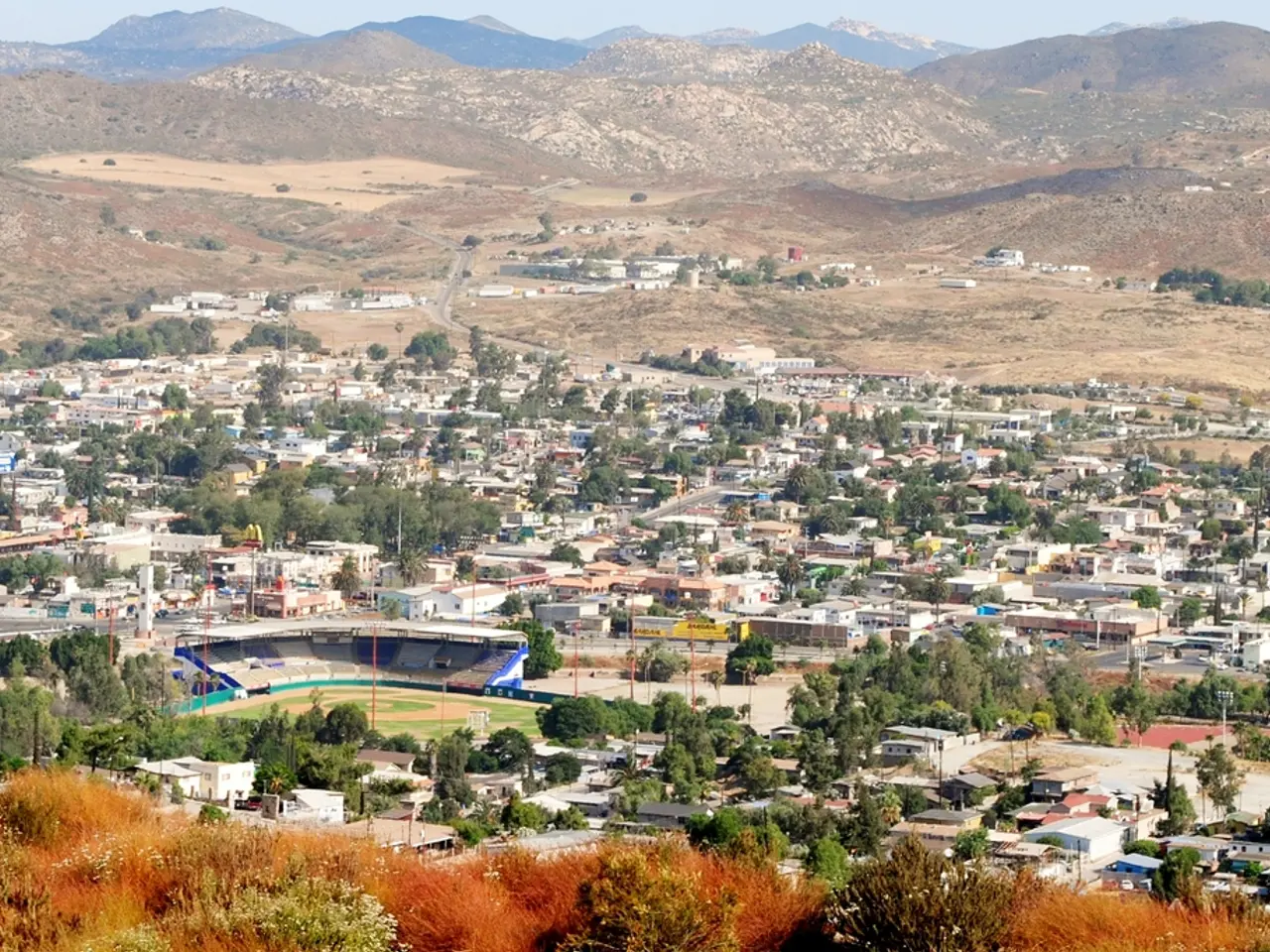Dismantling Democrat-dominated districts sought by Texas GOP legislators
In Texas, a proposed redistricting of congressional districts is aimed at creating five additional GOP-leaning seats, targeting Democratic-leaning areas like Austin, Dallas, Houston, and South Texas [1][2][3]. This move could potentially expand the Republican majority in the U.S. House, making it harder for Democrats to regain control in the 2026 midterm elections.
The GOP-proposed map dismantles several Democratic districts, effectively "squeezing out" these new Republican seats. Democrats view this as a partisan gerrymander that suppresses votes in communities of color and could violate the Voting Rights Act [4].
Currently, only 15 Republican House members won by less than 5 percentage points in 2024. With the new Texas map, Democrats would need to flip 8 seats, significantly raising the challenge and requiring a larger national vote swing [3].
Rep. Al Green may run in the neighboring 18th District instead, which has been vacant since Rep. Sylvester Turner died earlier this year. However, District 9 in Houston, currently represented by Democratic Rep. Al Green, would change dramatically under the new map, morphing from a Democratic district based in southern Houston to a Republican district in eastern Harris County.
In District 34, currently held by Democratic Rep. Vicente Gonzalez, a bigger shift towards Trump is expected under the new map. Gonzalez won by less than three points in November, making his position under this map tougher than Cuellar's, who won by a bit less than six points in 2024.
The new map for the Texas congressional districts would distribute GOP voters efficiently, making it possible for Donald Trump to win all 30 districts where the party aims to win by at least 10 percentage points. A big piece of Rep. Julie Johnson's Dallas-area 32nd District would be merged with Democratic Rep. Marc Veasey's 33rd, while other Democratic areas would be distributed to heavily Republican seats.
The new 32nd District would extend east into the heavily Republican counties of Rockwall, Hunt, Rains, Wood, Camp, and Upshir. The new 35th District includes some Democratic parts of San Antonio but stretches out into more Republican turf in Guadalupe, Karnes, and Wilson counties. Much of the Austin portion of the district would be absorbed into Democratic Rep. Lloyd Doggett's 37th.
The map is expected to perform well for Republicans if the party continues to do as well in the state as they did in 2024, when Trump won by nearly 14 points. However, if a future election looks more like 2020, when Trump's margin was less than half that, several of these districts could be much more competitive.
The redistricting battle has national implications because Texas’s changes could serve as a model for other states to pursue partisan redistricting, influencing control of the House in 2026 [4]. Aside from political consequences, the redistricting fight has practical impacts, such as complicating election preparations for Texas primaries in 2026 due to delayed maps and uncertainty about polling logistics [5].
References: [1] The New York Times. (2022, February 19). Texas Redistricting Plan Favors Republicans, Shifting Power in Congress. Retrieved from https://www.nytimes.com/2022/02/19/us/politics/texas-redistricting.html [2] The Texas Tribune. (2022, February 18). Texas redistricting maps: What you need to know about the proposed maps for Congress. Retrieved from https://www.texastribune.org/2022/02/18/texas-redistricting-maps-congress/ [3] The Hill. (2022, February 18). Texas GOP redistricting plan could make it tougher for Democrats to regain House majority. Retrieved from https://thehill.com/homenews/state-watch/3219093-texas-gop-redistricting-plan-could-make-it-tougher-for-democrats-to-regain/ [4] Vox. (2022, February 18). Texas's redistricting plan could be a disaster for Democrats. Retrieved from https://www.vox.com/22980606/texas-redistricting-map-2022-gerrymander-democrats [5] The Texas Tribune. (2022, February 17). Texas redistricting: What's taking so long? Retrieved from https://www.texastribune.org/2022/02/17/texas-redistricting-maps-delay/
The proposed redistricting of Texas congressional districts, aimed at creating additional GOP-leaning seats, is a matter of policy-and-legislation that has national implications, as its partisan approach could influence control of the House in future elections and serve as a model for other states. However, the redistricting plan, which dismantles several Democratic districts, is viewed by Democrats as a partisan gerrymander that could violate the Voting Rights Act and suppress votes in communities of color.





